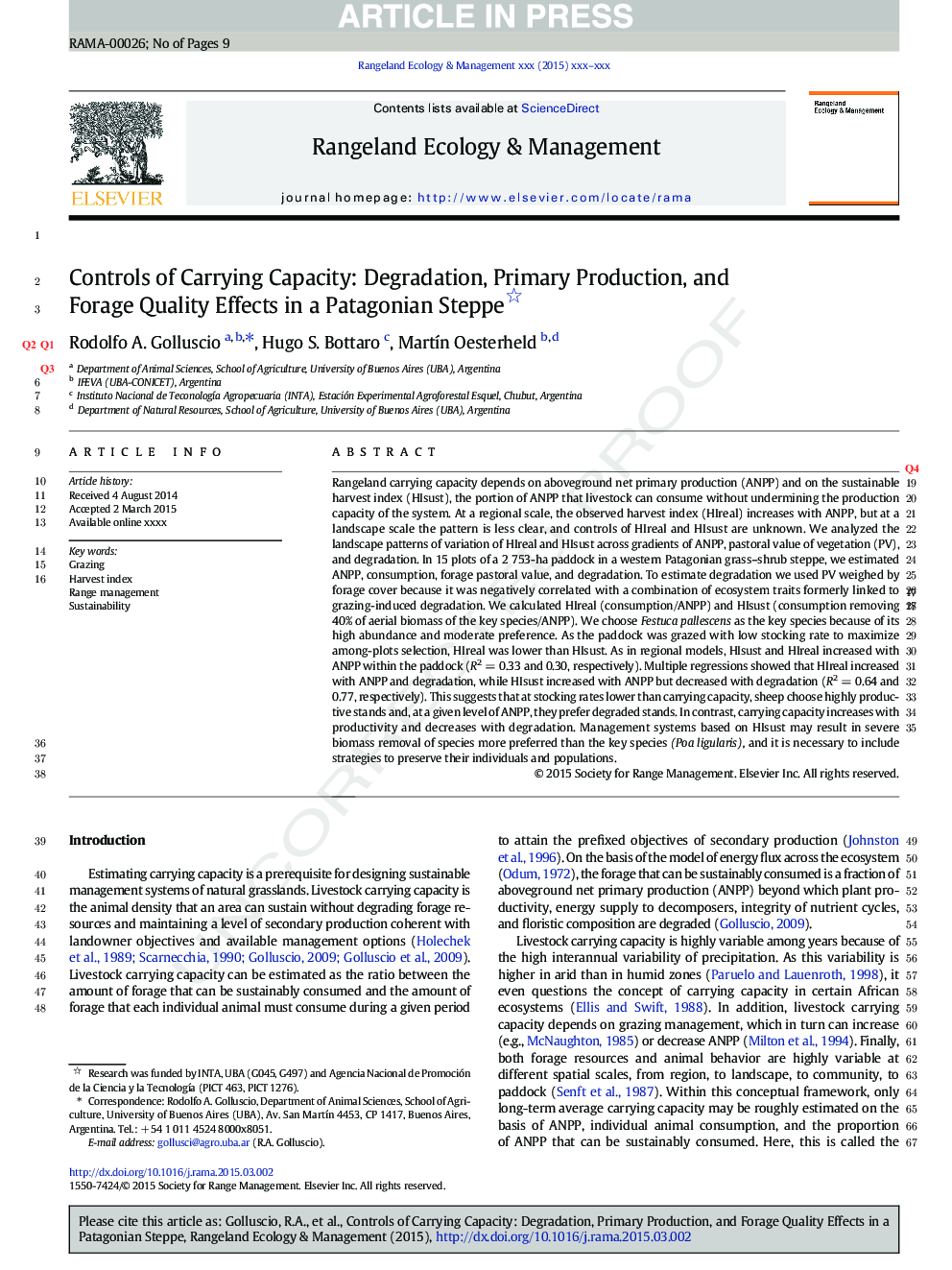| کد مقاله | کد نشریه | سال انتشار | مقاله انگلیسی | نسخه تمام متن |
|---|---|---|---|---|
| 4404285 | 1307152 | 2015 | 9 صفحه PDF | دانلود رایگان |
عنوان انگلیسی مقاله ISI
Controls of Carrying Capacity: Degradation, Primary Production, and Forage Quality Effects in a Patagonian Steppe
ترجمه فارسی عنوان
کنترل ظرفیت حمل: تجزیه، تولید اولیه و اثرات کیفیت علوفه در یک مرحله پاتاگون
دانلود مقاله + سفارش ترجمه
دانلود مقاله ISI انگلیسی
رایگان برای ایرانیان
کلمات کلیدی
چرا؟ شاخص برداشت، مدیریت محدوده، پایداری،
موضوعات مرتبط
علوم زیستی و بیوفناوری
علوم کشاورزی و بیولوژیک
علوم کشاورزی و بیولوژیک (عمومی)
چکیده انگلیسی
Rangeland carrying capacity depends on aboveground net primary production (ANPP) and on the sustainable harvest index (HIsust), the portion of ANPP that livestock can consume without undermining the production capacity of the system. At a regional scale, the observed harvest index (HIreal) increases with ANPP, but at a landscape scale the pattern is less clear, and controls of HIreal and HIsust are unknown. We analyzed the landscape patterns of variation of HIreal and HIsust across gradients of ANPP, pastoral value of vegetation (PV), and degradation. In 15 plots of a 2 753-ha paddock in a western Patagonian grass-shrub steppe, we estimated ANPP, consumption, forage pastoral value, and degradation. To estimate degradation we used PV weighed by forage cover because it was negatively correlated with a combination of ecosystem traits formerly linked to grazing-induced degradation. We calculated HIreal (consumption/ANPP) and HIsust (consumption removing 40% of aerial biomass of the key species/ANPP). We choose Festuca pallescens as the key species because of its high abundance and moderate preference. As the paddock was grazed with low stocking rate to maximize among-plots selection, HIreal was lower than HIsust. As in regional models, HIsust and HIreal increased with ANPP within the paddock (R2 = 0.33 and 0.30, respectively). Multiple regressions showed that HIreal increased with ANPP and degradation, while HIsust increased with ANPP but decreased with degradation (R2 = 0.64 and 0.77, respectively). This suggests that at stocking rates lower than carrying capacity, sheep choose highly productive stands and, at a given level of ANPP, they prefer degraded stands. In contrast, carrying capacity increases with productivity and decreases with degradation. Management systems based on HIsust may result in severe biomass removal of species more preferred than the key species (Poa ligularis), and it is necessary to include strategies to preserve their individuals and populations.
ناشر
Database: Elsevier - ScienceDirect (ساینس دایرکت)
Journal: Rangeland Ecology & Management - Volume 68, Issue 3, May 2015, Pages 266-275
Journal: Rangeland Ecology & Management - Volume 68, Issue 3, May 2015, Pages 266-275
نویسندگان
Rodolfo A. Golluscio, Hugo S. Bottaro, MartÃn Oesterheld,
